-
News & Trends -
Sales -
Marketing Related Topics -
B2B Software Guides Related Topics -
Free Tools & Resources -
- About Us About Us
A LinkedIn headline is the text that appears directly underneath your name on your LinkedIn profile. It’s one of the first things people see, and it's your chance to summarize what you have to offer potential customers and hiring managers. We’ve compiled some of the top LinkedIn headline examples for sales and explained why they work so you can identify the best ideas for your own. Some of these frameworks work well together, while others are good independent strategies.
When crafting your headline, consider optimizing your entire LinkedIn profile for maximum results. If you need a fully optimized profile, hire a LinkedIn expert on Fiverr for as little as five dollars to start. Services ranging from profile review and analysis to full profile creation. Fiverr is a gig-based marketplace with professionals offering LinkedIn profile services; check out the top options below:
With this formula, “X” is the client, “Y” is the action you take to help them, and “Z” is the outcome. With this formula, you’re able to convey exactly what you do in a concise manner. It also makes your customers the focus of your profile, showing a sort of professional selflessness that reflects positively on your attitude when dealing with new prospects. This “helping” language is a good option for consultants and advisors.
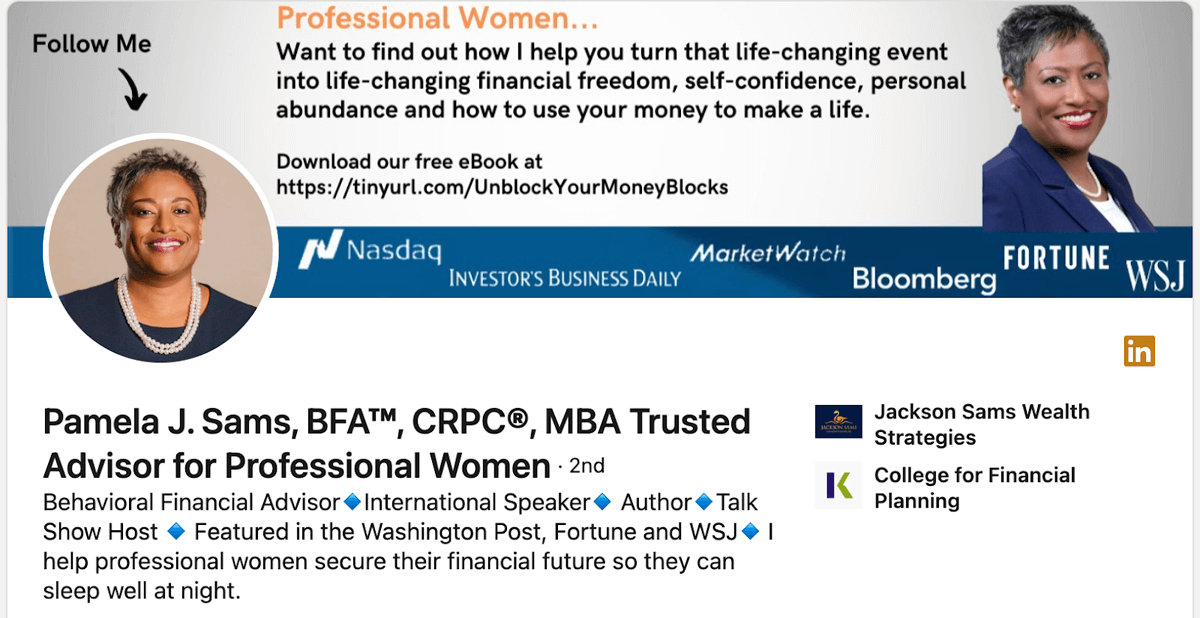
Pamela Sams said that she wanted her niche to be represented in her headline, and this structure is the perfect way to get that done. Her headline makes clear exactly who she helps, and what she helps them do, in a short, simple sentence. We also recommend you follow her lead by including your job title(s) beforehand so visitors have the clearest possible idea of what you do.
If you’re a freelancer, a business owner, or an entrepreneur, it’s important to give prospective clients an idea of your business’s unique selling proposition (USP). Spend a sentence explaining what sets your business apart and how it can make a difference for your clients. This is your chance to lean into what makes your business the best option in your industry, and it works best for business owners or those developing a personal brand.
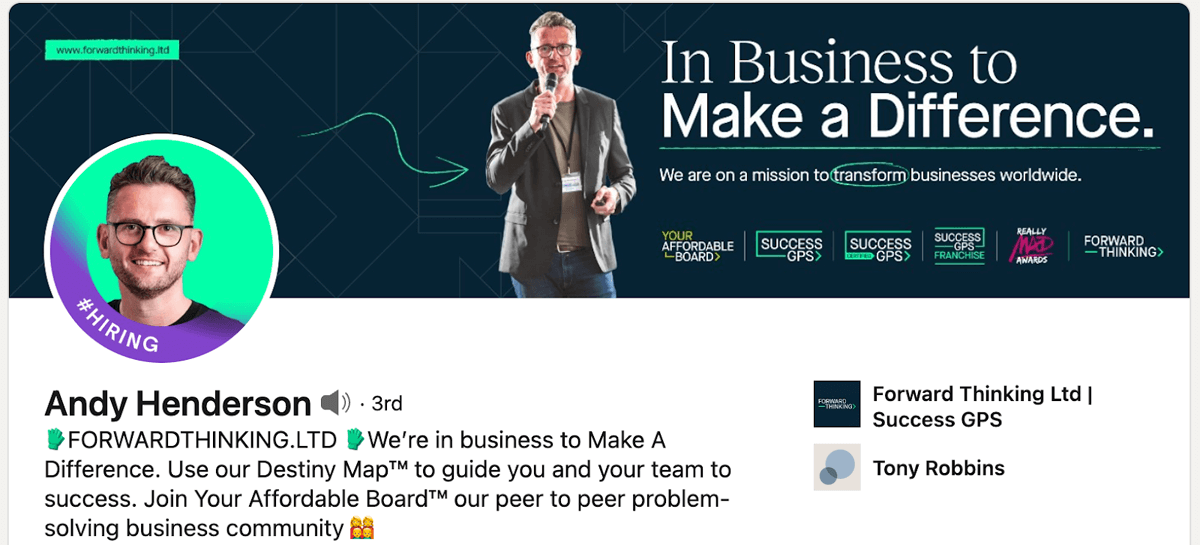
Andy Henderson explained to us that his headline is meant to ensure that those on his page immediately know what unique product he offers — his “Destiny Map” — and what clients can use it to accomplish. His cover image also includes a strong mission statement and sources of credibility to complement the headline. Using both his headline and his cover image in this way is a great strategy to highlight his USP and show visitors what sets him apart from similar profiles.
Whether a profile visitor is a hiring manager or prospective client, they want to know how doing business with you can benefit them. So, consider spending a sentence or phrase demonstrating your value-add for those you work with. This is an especially helpful framework when trying to identify and communicate your USP mentioned above.
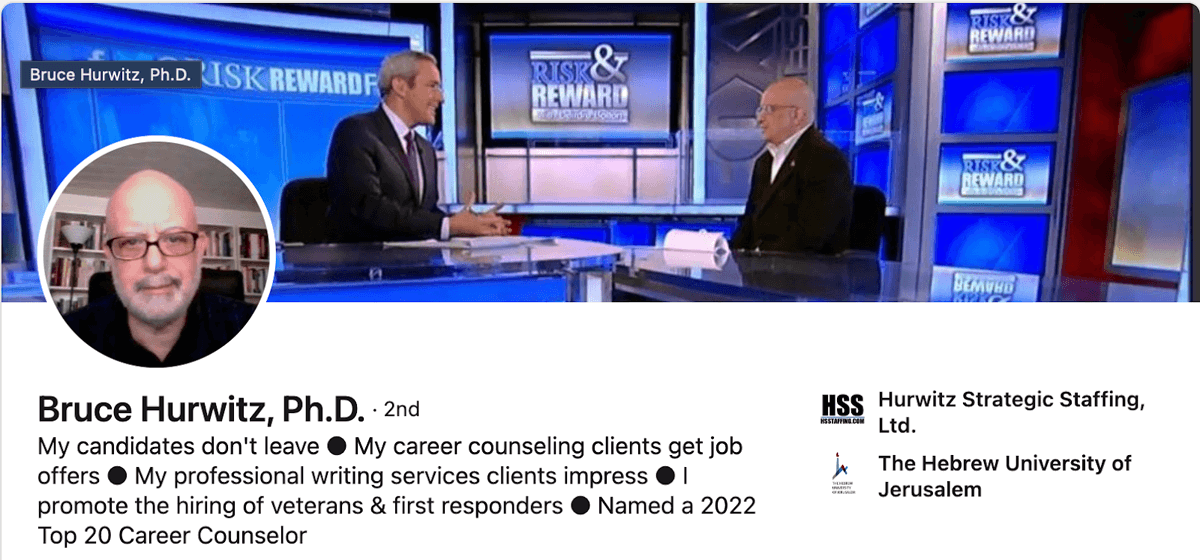
Bruce Hurwitz focuses on a “results-oriented” headline, which describes the tangible outcome of working with him. He paints a clear picture of the value he brings to his clients and focuses less on job titles or descriptions. Since he makes the language of his LinkedIn headline specific, his page visitors can infer what he does and the value he provides, and he therefore doesn’t have to give a specific title.
Using rich adjectives that add detail and intrigue to your qualifications and titles can produce a more eye-catching headline. It makes your headline more interesting, and the adjectives you use can add context to the job that you perform. This allows you to brag about yourself and can be used to spice up any headline.
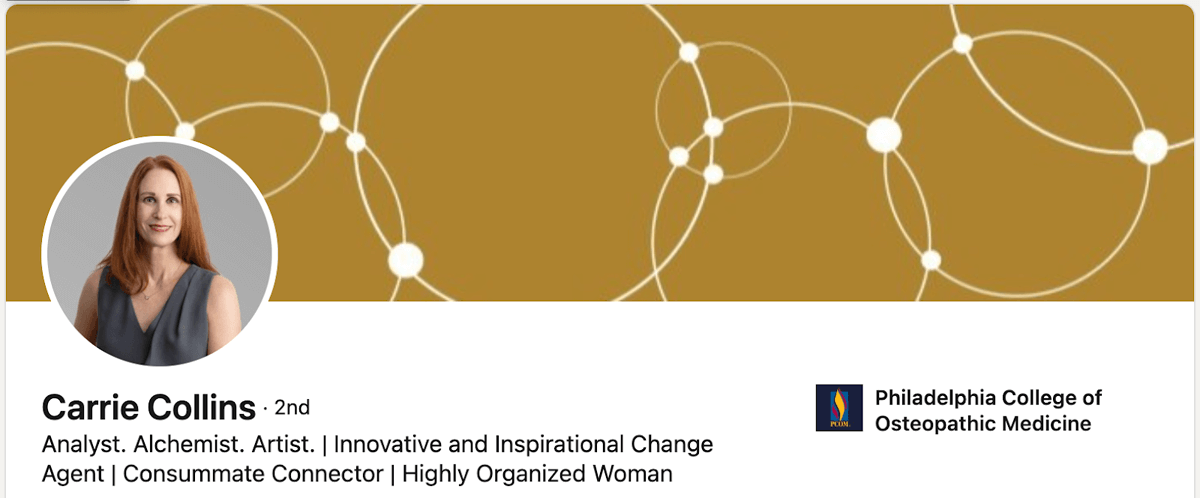
Carrie Collins feels that simply settling for a job title or a description of your duties sells the profile’s subject short. Instead, she opts to describe who she is, using some adjectives like “innovative and inspirational” to paint a picture of how she operates in her business. By doing so, not only does she communicate what she does, but she also shows her personality in the process.
When crafting your headline, think of it as an introduction to your larger LinkedIn profile. Use it to convey key information in your most important bio sections so your entire profile works together to deliver your intended message. Specifically, your headline should support your about and experience sections (and vice versa), but there are other important areas to consider. First, identify the sections important to your audience, then optimize them with your headline for cohesive branding.
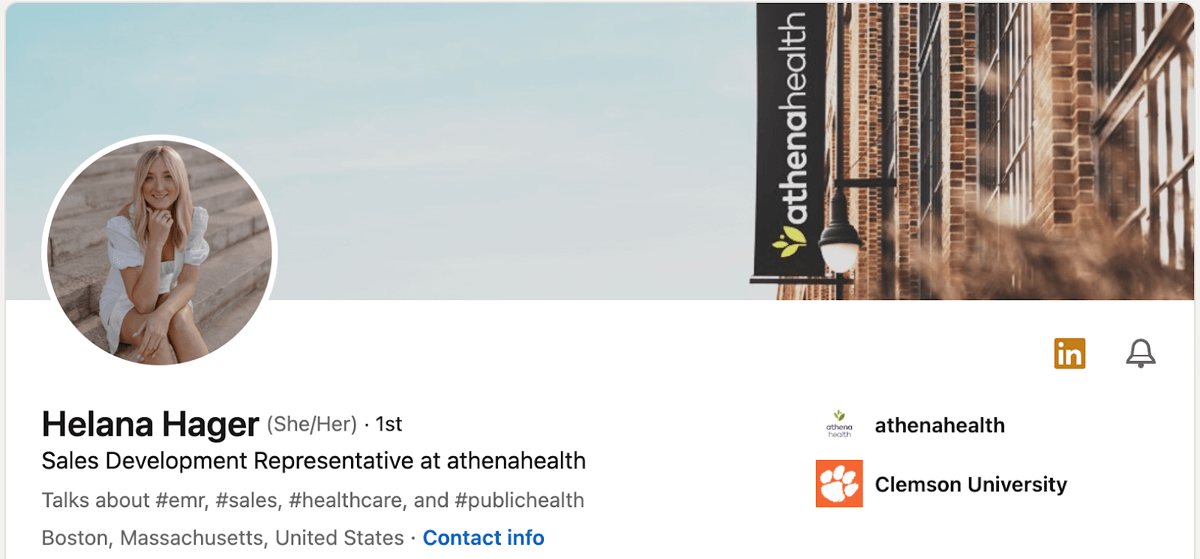
In this example, Helana Hager highlights the fact that not only is she an SDR within healthcare, she makes it clear her profile and content revolves around health care, sales, and public health. Then, when you read her "about" and "experience" sections, she highlights her career achievements and professional experience and how it all ties back into her mission with medical sales.
When creating and optimizing your headline, make sure to dial in the connected sections of your LinkedIn profile so they all work together. To help, we've created a LinkedIn optimization checklist which you can download for free below. There, you'll find a breakdown of the most important LinkedIn sections with detail on which ones to consider optimizing and how to maximize each:
If you have a location-specific business or specialize in a specific part of the world, tell your network where you're focused. This will show your audience that not only are you an expert in your field but also an expert within a locally-specific region, so those looking for help in your area know you'll be able to aid them. To maximize this headline example, also be specific about the demographics of who you serve, such as company size or industry.
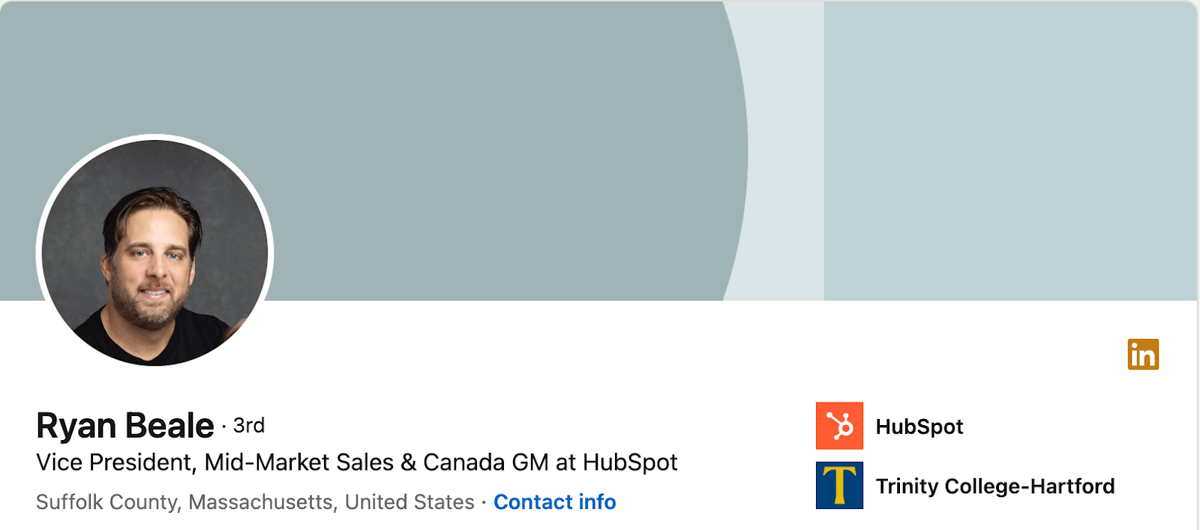
Ryan Beale does an effective job at telling his audience that he focuses on sales within Canada for companies that are in the small- to mid-sized range. By doing this, anyone from Canada looking to get in contact with a salesperson from his company knows that he'll be able to help them.
Another potential value-add for page visitors is the variety of services you provide. So, if you have a wide array of skills related to your industry, include those in your headline so you can cast a wide net for new business.

For example, as an editor, Jacob Edson knows it’s vital to show versatility in his trade to ensure he meets the needs of as many visitors as possible. So, listing off all of the different niches that he can fill is a solid strategy to catch as many eyes as possible, and it keeps his horizons broad in regard to new work.
If you’re looking to attract new business or recruiters with your expertise or prestige, include some examples of your authority on your industry in your LinkedIn headline. This can include awards, recognition in the media, high-level positions you’ve held in the industry, or specific data behind your accomplishments such as high annual sales numbers. This works best for anyone who could benefit from demonstrating their influence within their industry.
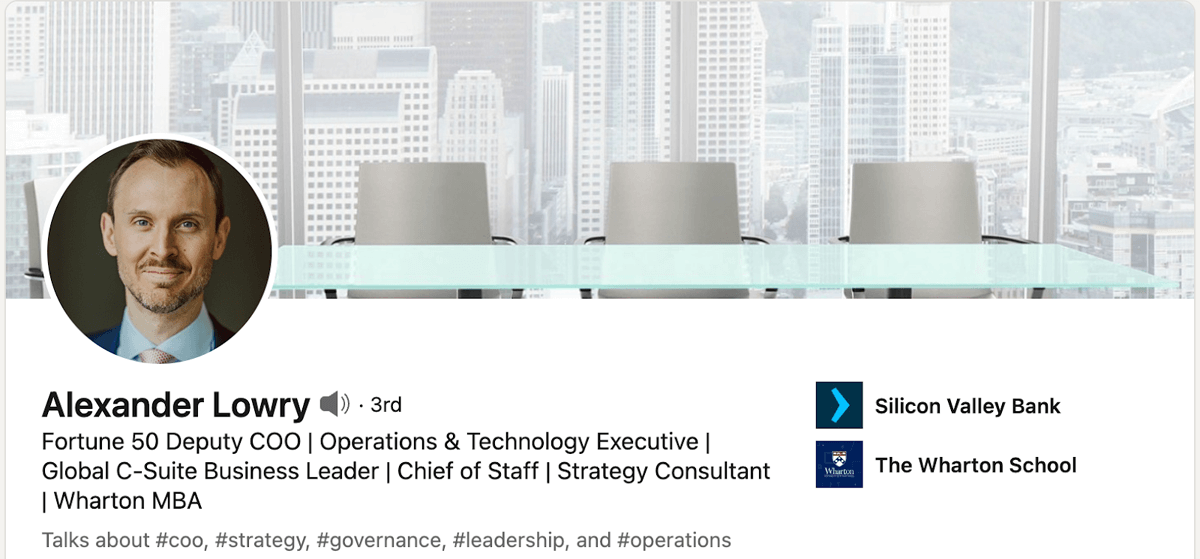
Alexander Lowry has done a good job demonstrating this authority by including his recognition and involvement in leadership, along with some high-level positions he’s held. The key to this strategy is to ensure that the accolades you list are significant to people in your industry and avoid adding “fluff” items to pad the headline. Keep the information relevant.
All LinkedIn users should take into account the way LinkedIn searches work. When a person searches for profiles, LinkedIn's algorithm uses keywords to bring them the best possible profiles. Take some time to think about keywords that a hiring manager or prospective customer may search to find somebody in your industry, and include a few of them in your headline and “About” section.
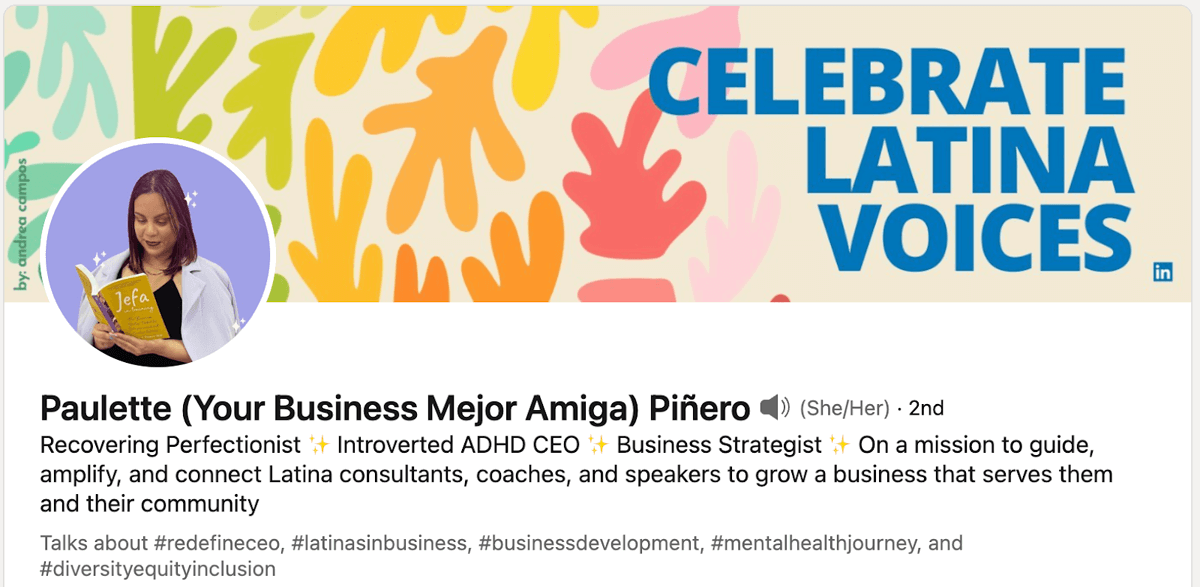
Because Paulette Piñero uses words like “CEO,” “strategist,” “connect,” “consultants,” and “coaches” in her headline, she ensures that her profile includes a high keyword density to improve her visibility in searches. So, no matter which word people search to find somebody to provide expert advice on leadership, management, or education, Paulette’s profile is likely to come up.
While LinkedIn is all about professionalism, it's also important to show your clients or prospects who you are outside of work. For example, you can use your LinkedIn headline to highlight your title or company while also giving some information on extracurricular activities like volunteering or being a parent. This makes you more personable and also creates a talking point for potential clients.
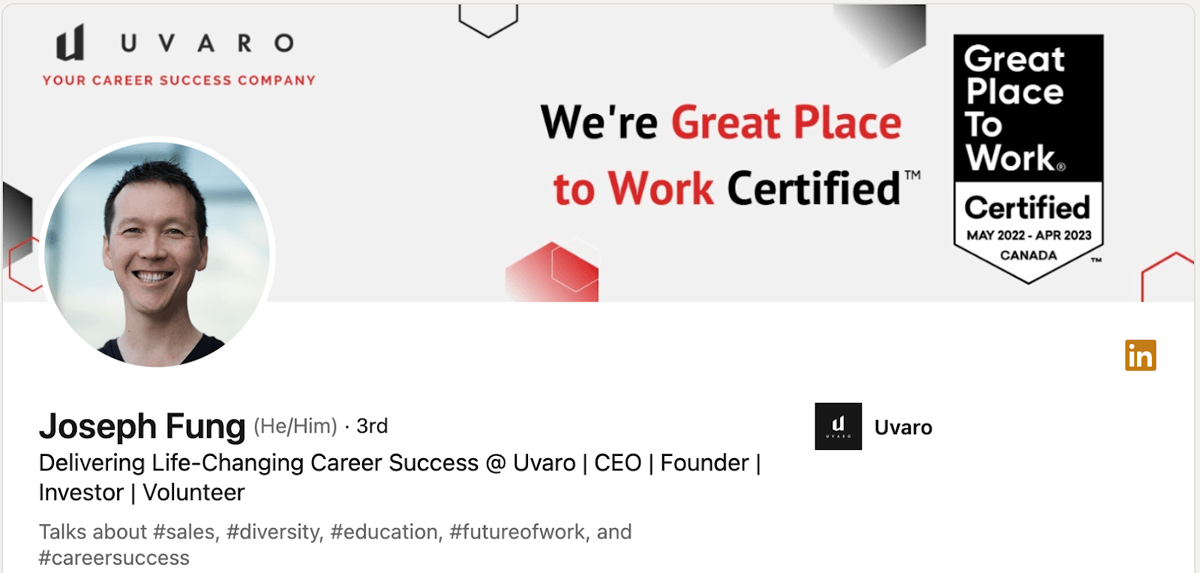
Joseph Fung does a great job of highlighting who he is outside of work by including his passion for volunteering in his headline. This allows Joseph to come across as a normal human while creating the ability for people to connect with him on a personal level, in addition to also understanding his job title and overall role.
It can be helpful to promote your personal mission in your headline and give visitors to your page an idea of your personal goals. This provides context for your career experience and provides a better understanding of your motivation. Use this strategy to help visitors get to know you by reading your headline, and they may become more invested in you as a business partner or potential employee.
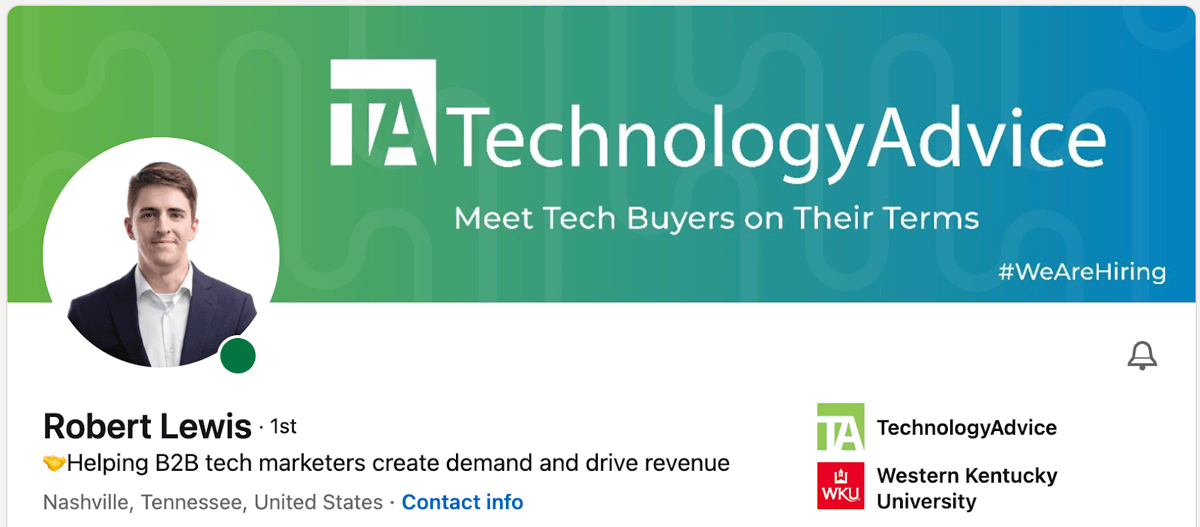
Robert Lewis’ headline is a solid example of this method because it outlines his specific functions and his mission: to assist his clients in the B2B technology market, create a demand for their product or service, and help drive revenue. This gives you an idea of what his role with B2B tech marketers is and some insight into his mission.
If you or your business partakes in some form of philanthropy or social activism, include it in your LinkedIn headline. This positively impacts your professional image and clues visitors in on what matters to you and your business. Educating your profile visitors on the causes you support can help you find new jobs and clients that align with your values.
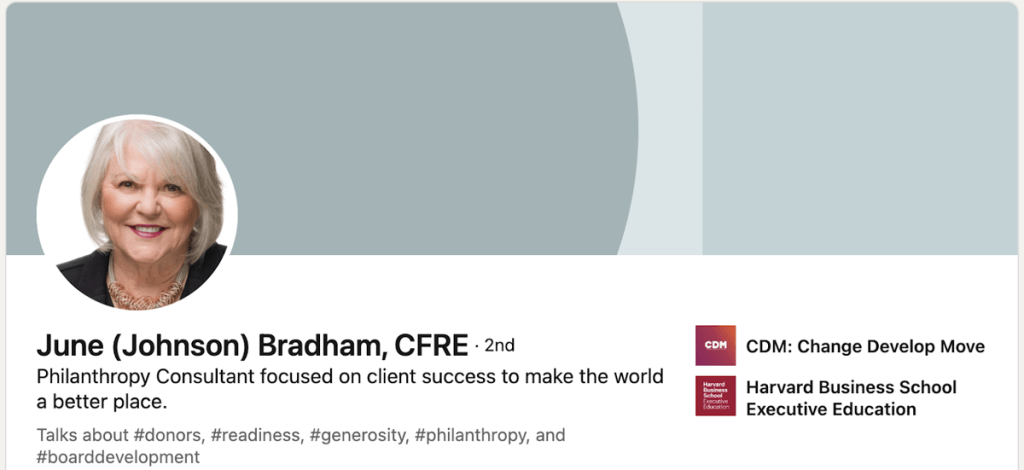
In this example, June Bradham lets visitors know the overarching goal of her business, which is to decrease the gap between her clients and their philanthropy initiatives. This immediately shows her professional motivation to help others and elevate those with whom she works. She also adds her CFRE certification into her name as a reference of credibility that supports her mission for making the world a better place.
Another effective method to tell your story are sub hashtags in your headline. This gives you the chance to be specific about the services you specialize in and can help with keyword searches. If a client is searching for a specific role or job, these sub hashtags allow your profile to appear in these searches while also not simply listing all of your services in your main headline.
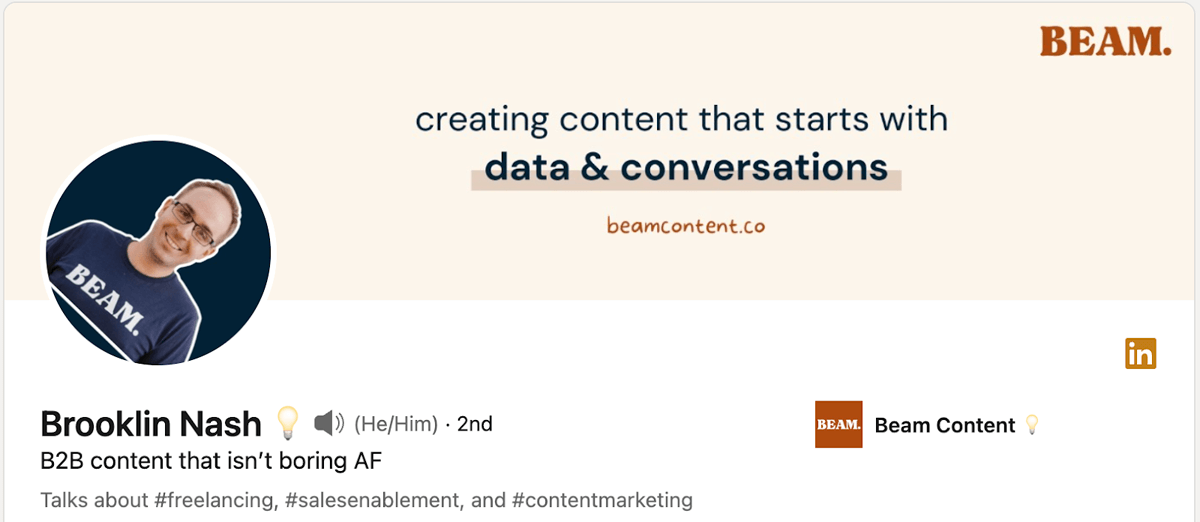
Brooklin Nash uses his headline to explain what he does, and then uses the sub hashtags to explain what is an expert in. This adds depth to his profile and allows him to show up in keyword searches that clients do on LinkedIn if looking for these services.
Looking through numerous LinkedIn profiles can be arduous, and setting your headline apart aesthetically is a solid way to make your profile feel less plain. If you’re going to use symbols or emojis to do this, make sure they have a purpose. This can mean using them to break up the information in your headline, or adding one to the end of the headline to wrap it up with some flair.
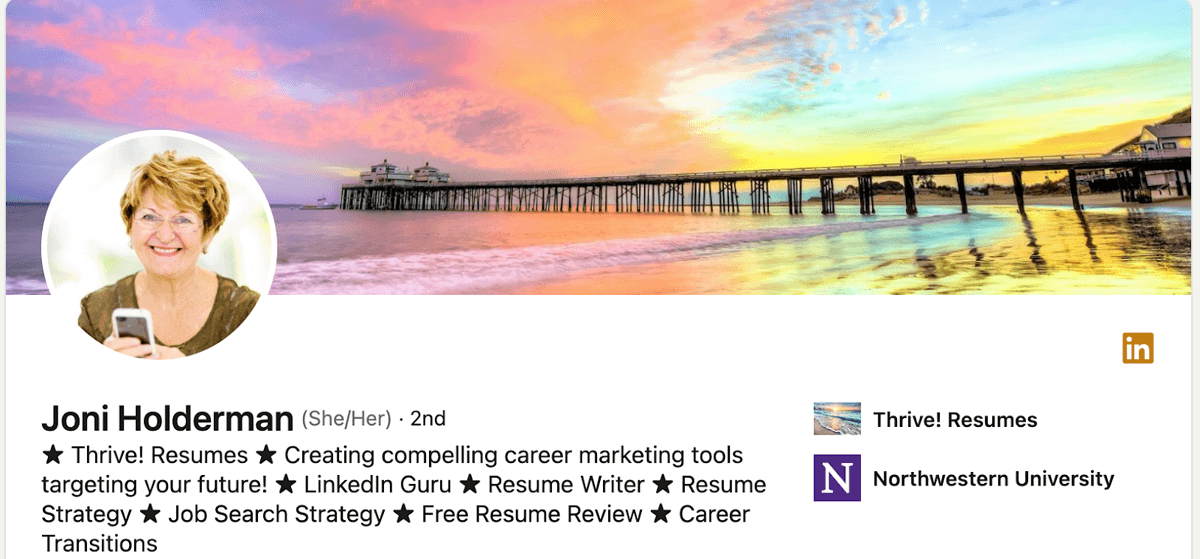
Joni Holderman’s headline serves as a solid example of using symbols to break up information in the headline. Not only does it make her headline more readable, but it also personalizes the aesthetic and gives visitors a reason to remember her profile. It seems like a small difference, but when you’re competing with many other profiles for new clients or jobs, every little advantage counts. She also mentions her value-add, as we discussed in the Flaunt Your Value-Add section above.
If you prefer simplicity or are just starting out in your field and you haven’t gathered a ton of experience, positions, or accolades to list in your heading, it’s okay to simply list your job title and the company you work for. A short headline can still convey valuable experience and confirm that you’re active in your field.
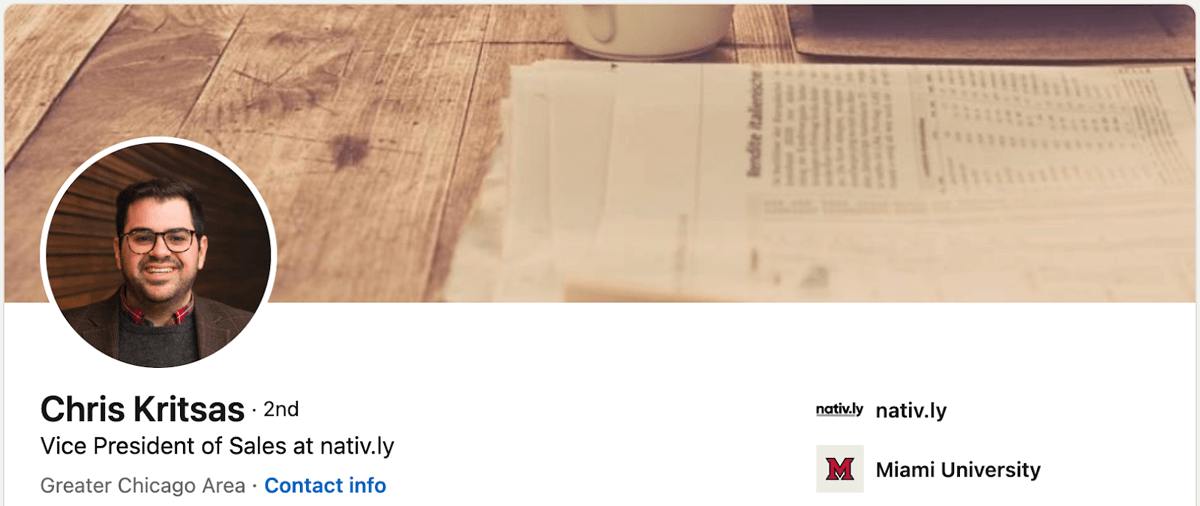
Chris Kritsas utilizes this simplicity by listing his position as a VP of sales. There’s nothing wrong with this approach, and many people prefer a short, straightforward headline. Those looking for connections in sales, in sales leadership, or at your current company will know that he has the valuable experience they’re looking for.
If you do have a lot of relevant job experience or other relevant details to put in your bio, consider including all of them. As long as you’re listing experience that’s relevant to your work, stacking your bio with many reasons to choose you isn’t a bad idea, as it’s the first thing that people are going to see when they visit your page. This is similar to Demonstrate Authority With Social Proof; however, in this case, you’ll list as many examples of authority as possible.
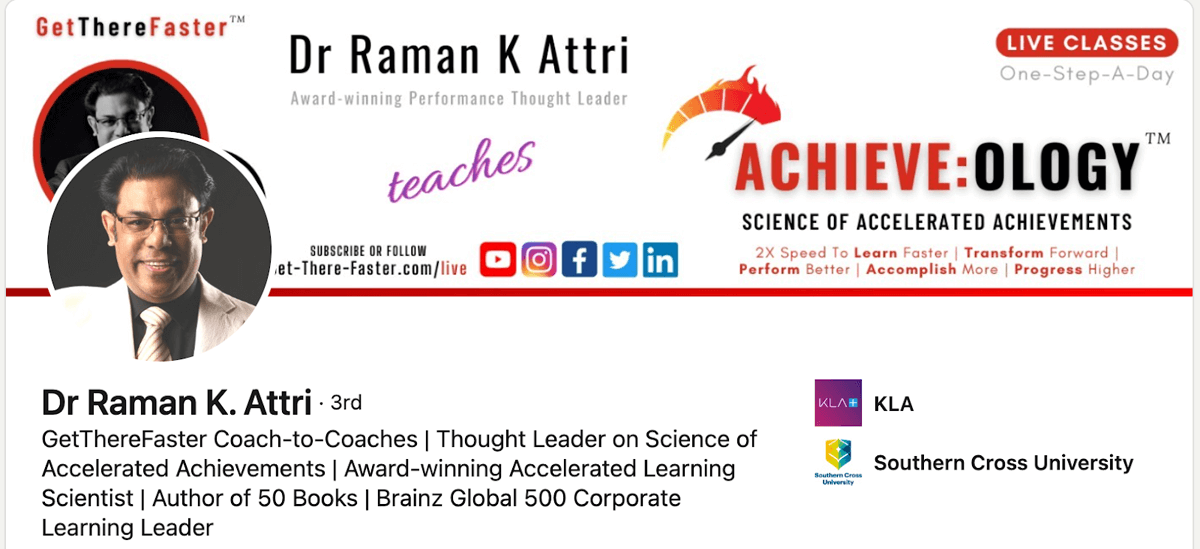
Dr. Raman Attri told us he likes to ensure that his headline can stand alone, since many won’t read the rest of the page. So, he includes his experience as a researcher, the number of books he’s written, and education credentials that may impress people. Take note of his use of vertical bars between each piece of information. Consider employing these or a similar way of breaking up the information to make it more readable if you use this strategy.
This strategy differs from most of the others and offers a unique strategy to get visitors to read more of your profile by keeping the headline vague or broad. This usually means only including a job title, and possibly a short phrase regarding the wide variety of services or expertise that you offer. As such, it’s best used when you work in a complicated or diverse field and need the extra length from your “About” section to effectively explain what you do.

As an expert in digital media, Rosi Ross knew that she had to create a vague, intriguing headline to draw eyes further down her profile. This grows interest in the rest of her profile without taking too much of the visitors’ time on the headline, thus leaving more of their attention span for the “About” and “Experience” sections. Rosi even mentioned to us that she has used this headline since 2008, and her profile helped her expatriate to the USA from China.
If you’re creating an account for your company as a whole on LinkedIn, using your proven marketing slogan is a solid strategy to increase traction on your profile. Since you’ve already vetted your company slogan as a marketing tool, it makes sense to be consistent in your messaging and use it as your LinkedIn headline, as well.
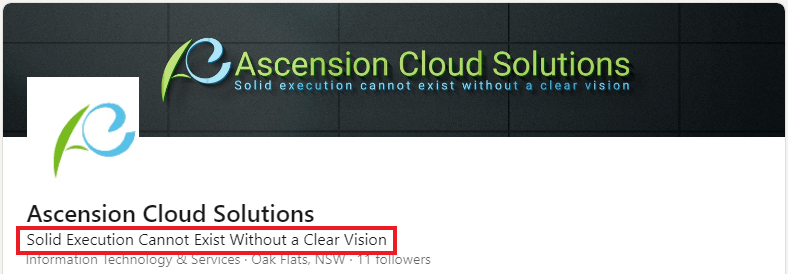
Ascension Cloud Solutions keeps this consistent marketing message on their LinkedIn profile. While it isn’t necessary to use your slogan in both the banner photo and the headline, it makes for a better demonstration since the headline and banner photo work together.
Referencing these tips and examples in your LinkedIn headline is a great way to see results, whether you’re looking for new leads for your business or a new sales job. So, choose one or a combination of the formats we’ve shown you, and you’ll build an attractive LinkedIn headline or improve your current one. Now that you have an attention grabbing headline, our article on LinkedIn lead generation will help you continue maximizing your profile with top strategies.
Trey is a former salesperson and current Orange County-based tech, sales, and finance writer. His specialties include sales guides, personal finance articles, and reviews across financial and credit products. In his free time, Trey writes fiction and practices boxing and Brazilian jiu-jitsu.

Selling Signals delivers actionable advice for sales and marketing professionals. Learn strategies that help you hit targets, strengthen customer relationships, and win more business. Get expert advice on lead generation, sales processes, CRM software, sales management, and account management directly to your inbox.
Property of TechnologyAdvice. © 2025 TechnologyAdvice. All Rights Reserved
Advertiser Disclosure: Some of the products that appear on this site are from companies from which TechnologyAdvice receives compensation. This compensation may impact how and where products appear on this site including, for example, the order in which they appear. TechnologyAdvice does not include all companies or all types of products available in the marketplace.